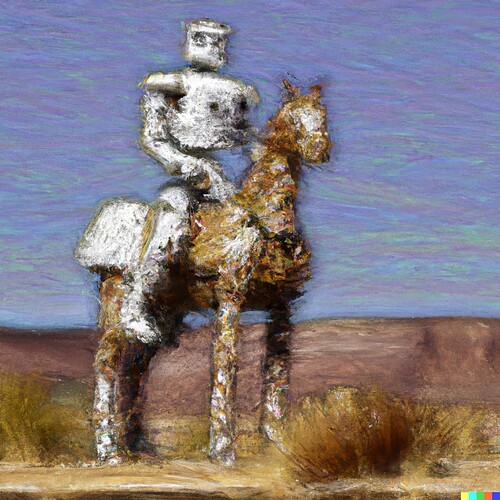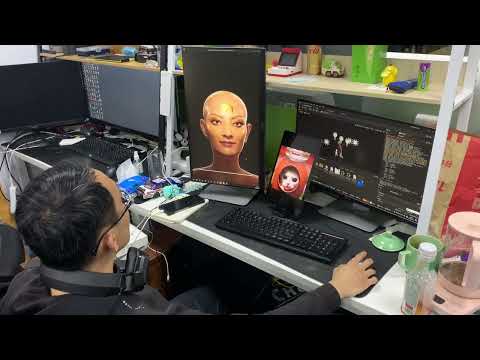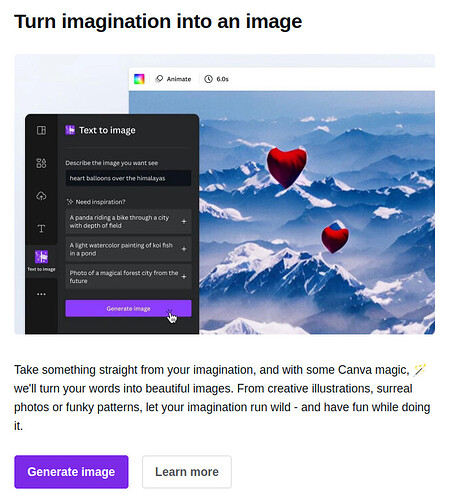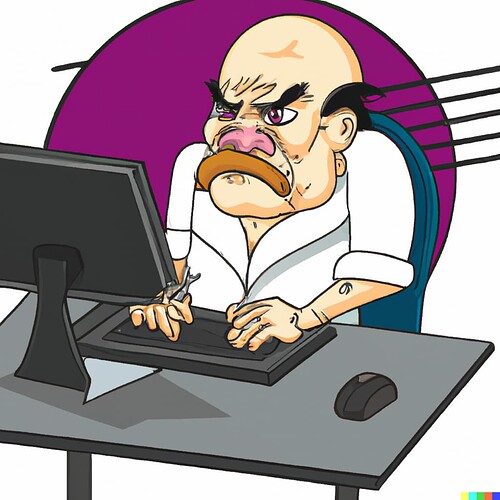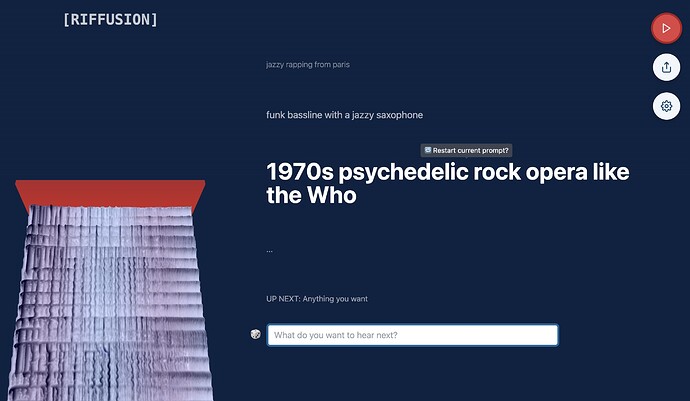Because this topic is long and I am hoping to attract some resoponses, I jusr posted a question about Elicit, an AI research assistant over here in the OEG Plaza
Hi, I am still here, experimenting. Since I started it the possibilities (and issues) of AI powered image generators has gone much farther than what I was first using.
It’s a bit like the wild west of AI.
Some big news is that the DALL•E service is now available for everyone (I waited 4 months to get access)
The rules of rights/reuse here are as fluid as the technology. How are educators using this kind of creation tool? Can images be used under an open license? Who even owns them? What is even real anymore?
Look soon as this capability is happening/emerging for generating video. Is anyone else wondering about this?
As an iterative/interesting effect, this is the first time I tried the option under a result to Generate Variations- this means you can hone in to a better image?
And one more loop (oh my credits are disappearing)!
I was reading this CC’s article about the use of Artificial Intelligence and the possible regulations, mainly due to privacy issues.
And at the end they mention this intersection between copyrights and AI-generated content and there is still a question of whether it should be copyrighted or not. Who is the author in this case?
There’s a few layers to peel and the references at the bottom circa 2015 show CC has been on this for a while.
I’ve linked a few things in the mess above, but it seems clear that ownership is based on a human creator, which is not present – a human may enter the prompt or change settings but the AI is creating the image. So I guess the parallel is that Photoshop can never claim to be the author of an image, it’s a tool.
The other side, where the EU actions may be looking, is the question of is it a violation of rights to use content in the training set? There was some examples of this at the Vancouver Museum of Art exhibit we got to visit in September (rats you could not be there) see https://imitationgameexhibition.ca/ especially the one for ImageNet.
My curiosity has been also about how we can encourage educators to use AI generated media, how do we credit/attribute it? The tools have been changing their terms to include this.
Craiyon now has a terms of use I did not see earlier- it states images created can be used for non-commercial purposes, but is not clear who owns the image, though they require attribution to Craiyon.
DALL-E has a page on sharing and publication, and it looks like it suggests attributing to the person/company who created image.
I thought I saw another one that says the AI platform owned the image and the user could own the prompt.
It’s quite a moving target!
One more, here is a podcast relevant to your question @Mario that I have had sitting in a tab for a while.
The whole Deep Dive AI podcast looks worthy:
What’s an “Open Source” AI system?
The traditional view of open source code implementing AI algorithms may not be sufficient to guarantee inspectability and replicability of the AI systems. Algorithms are deciding who stays in jail or which customers deserve credit to buy a house.
Learn more about the challenges of AI.
Adding to the pile this twitter thread…
Can I do better than earlier attempts?
Yes. Maybe.
Months later, DALL-E seems to do much better, although it does not know kings from aces. The cat looks better

DALL·E generated image based on prompt “Black and white cat laying in front of a deck of cards with 2 kings showing” shared under terms of use (licenses do not exist)
This topic might never end, but then again, it’s mine. And the idea here was really to share a running string of notes.
So I saw this item from Boing Boing
and wondered what was the “impressive” aspect? I am going to leave it at the fact that “this guy” could build this demo from a handful of new platforms. That’s the spirit of remix.
But as I watch the video (try yourself) I am wondering, is this really how people will work with, create with computing tools? It looks so… tedious for the convenience of just yakking into a microphone. Where’s the undo? Where’s the creativity?
Beyond demoing just more or less random stuff, is this how we want to work?
To add to the string of notes, here’s an excerpt from canva.com newsletter sent a couple of days ago:
With tools like Canva making AI-generated imagery a built-in feature, mainstream adoption of these forms of AI is likely to grow significantly.
If you know any other tools that have embedded such functionality (or have any first-hand experiences / thoughts), please do share!
AI at warp speed 11… Heard from @moodler via the Fediverse (doubling up again on trends of AI AND Fediverse)
Martin is recommending DiffusionBee a MacOS app. While it is downloading a few Gb of stuff…
" DiffusionBee is the easiest way to generate AI art on your computer with Stable Diffusion. Completely free of charge. Runs offline. No limits"
I wonder if these generated images, while interesting, and often beautiful, approach some level of “sameness”. One of the things I most enjoy in writing, posting is finding an existing photo that works to me as a representation of an idea, using my Human Intelligence to select. And also, I want to support the efforts and ideas of creators who put their works into a public place, under some license of sharing.
Or am I just
DALL-E generate image from Alan’s prompt “A character from Grumpy Old Men sitting at a computer, scowling, artistic style”. I dislike this so much, I give it the WTF license!
I’m not seeing Walter Matthou or Jack Lemmon at all
Thinking of some old wisdom of Clay Shirky who once described social software as “stuff that gets spammed”, right today in my email inbox is a hint of where AI is headed-- not only as a buzzword for spam pitches, but what happens when AI starts authoring spam?
This spam message is aiming to get me to click on an offer for am “AI Assisted Membership Website” from a friend person name “Elvis”
Only as long ago as April 2022, Google was identifying AI generated content as spam… is it so?
Stable Diffussion now applied to generate Audio? Yep! Take a spin with Riffusion
You’ve heard of Stable Diffusion, the open-source AI model that generates images from text? Well, we fine-tuned the model to generate images of spectrograms. The magic is that this spectrogram can then be converted to an audio clip.
It can generate infinite variations of a prompt by varying the seed. All the same web UIs and techniques like img2img, inpainting, negative prompts, and interpolation work out of the box.
Learn more at https://www.riffusion.com/about
You can see/hear examples at https://www.riffusion.com/ and make your own. This was my effort:
What will be generated next?
